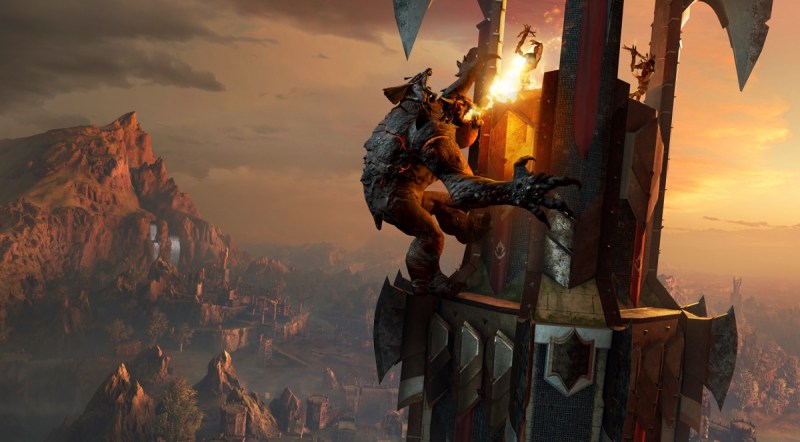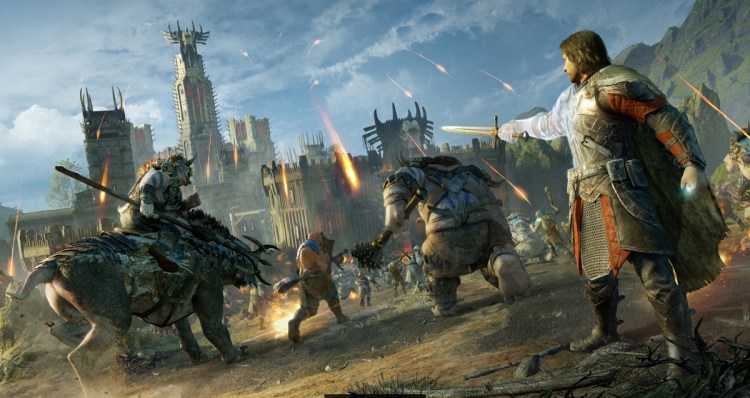
Above: The Balrog in Shadow of War.
GamesBeat: It’s interesting how much you can pack into these 60 years of the timeline.
de Plater: Well, that’s the time between the end of World War II and now. It’s a long time, decades of history. A lot can go on there.
GamesBeat: It’s surprising that Sauron even had any Orcs left.
de Plater: [Laughs] Well, we sort of looked at it the other way. We were surprised it took 60 years to build his army. What managed to delay him for decades? And maybe it’s keeping Mordor in this state of perpetual civil war during that period. If it wasn’t for our story, he would have been able to gather his armies and march 20 or 30 years earlier to conquer Middle-Earth. We want there to be real stakes in our story that genuinely meet that goal of saving the world, without changing the story we [have] now. We connect into the known story but do it in a way that sheds new light on it.
June 5th: The AI Audit in NYC
Join us next week in NYC to engage with top executive leaders, delving into strategies for auditing AI models to ensure fairness, optimal performance, and ethical compliance across diverse organizations. Secure your attendance for this exclusive invite-only event.
GamesBeat: It took me 80 hours or more to get through Mordor, I think in part because I hit one of those really high-level enemies. If this is a bigger game, how do you gauge just how much to put in it and how many people you’ll need to finish it? I’m not sure I have a good sense of the scale, except that it’s bigger.
de Plater: It’s much bigger, and the thing is, it’s much bigger in multiple dimensions. The size of the world is bigger. The story is much bigger. The systems — the Nemesis system, the enemies — are much bigger. All the RPG systems around gear and loot are bigger. It’s Shadow of Mordor cubed, sort of. But the minimum to get through — it’s at least three times longer if you’re racing through. It’s a big game. We still see new stuff all the time, which is fun.
GamesBeat: Do you see it as an open world, then, or do you see it as different from something like that?
de Plater: It’s an open world game. Our emphasis within the open world is creating a world in which we have these dynamic and procedural systems that can make new and interesting things happen, so players can create their own stories in the open world.
People responded very well to the Nemesis system in Mordor, having their own personal story. We knew we wanted to expand that. We always wanted to make a bigger, more detailed, more varied, richer open world. Players asked for it, but we wanted to do it as well. Exploration is fun.

Above: Middle-earth: Shadow of War.
GamesBeat: How do you divide people up to work on different parts of the project? Is it something like, “You do this fortress; you do that one?”
de Plater: It’s hard. Because everything is so interconnected, between the Nemesis system and the world — it’s almost as if everyone has to work on everything. We have people working on the different Orc tribes and how they influence the open world. We have all the ambient life and behavior, all the NPCs and other AI in the world. Then, we have the geography. But all of those systems have to talk to each other.
In a way, the design of the game forces everyone to be very collaborative. And then, the Nemesis system — if you have someone who’s a feral hunter, he’ll be pursuing a certain type of mission within the world. Everything is interconnected, which makes it hard for us to do more traditional development: “Here’s the artist and designer working on this chunk of the world.” We can’t really do that in the same way. It’s hard, but it’s fun.
GamesBeat: Ultimately, we know what happens 60 years later. Do we have some sense, in this story, that there’s a feeling of doom hanging over this character?
de Plater: There’s a quote from Tolkien that I like a lot. “There can be no story without a fall.” Many good stories are about some sort of fall from grace. When you deal with Rings of Power and Mordor and stories of revenge and Celebrimbor’s pursuit of power — there’s a tragic dimension or possibility there. But we’re doing that in a way where that sacrifice could also potentially lead to saving the world. We’re embracing that fact. Other people in Middle-Earth didn’t ultimately hear this story. Talion didn’t become famous. Why was that? What happened to him? There are interesting ways to explore that story and think about how it meshes with The Lord of the Rings. It’s a fall, but also a heroic one, which is almost the definition of tragedy, I think.
GamesBeat: But you don’t mind that the player knows this — they know that 60 years later, Talion’s not there and Sauron still is.
de Plater: Exactly. What we want to do is make the end of our story segue into the known story in a way that, when you read The Lord of the Rings, you see the connection. That’s something Rogue One did incredibly well. It segues into the known story but in a way that sheds new light on it, and it’s a cool story in its own right.
GamesBeat: Is there anything else you’d like to add?
de Plater: We’re really looking forward to people being able to play it and showing more of the story as well. Some of our characters in the story — that’s another area we’ve put a lot of effort into, but we haven’t shown much of it yet. Before E3, even, we’re going to have something. There should be a trailer that sheds some more light and some other reveals as well. More about the Nazgul and some of our other characters.


